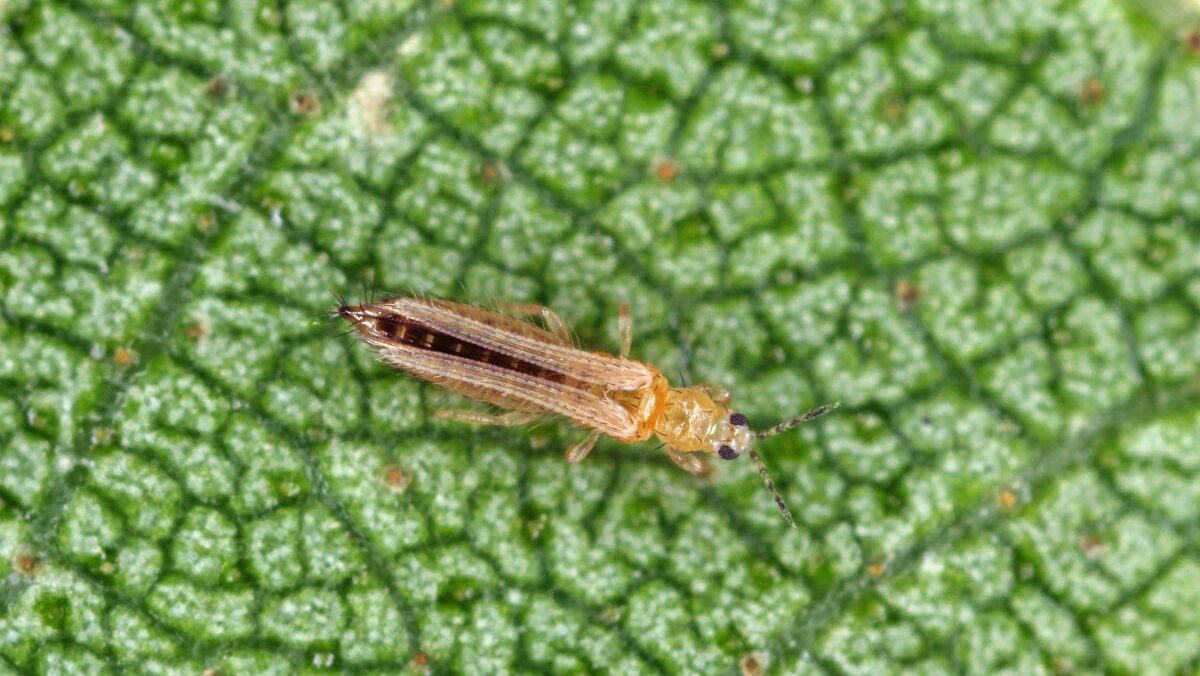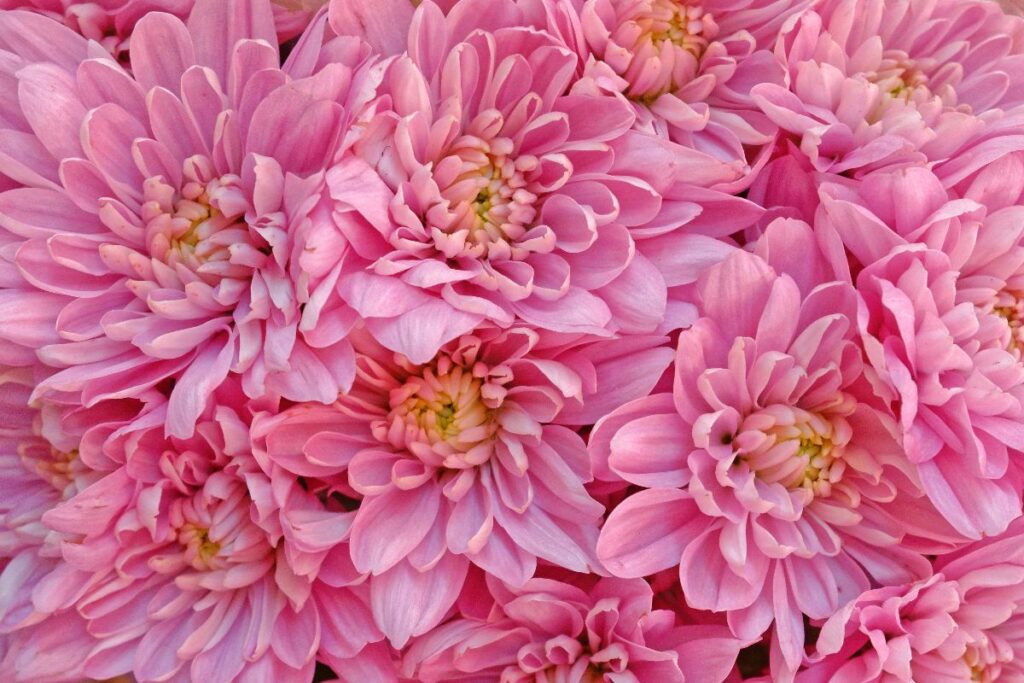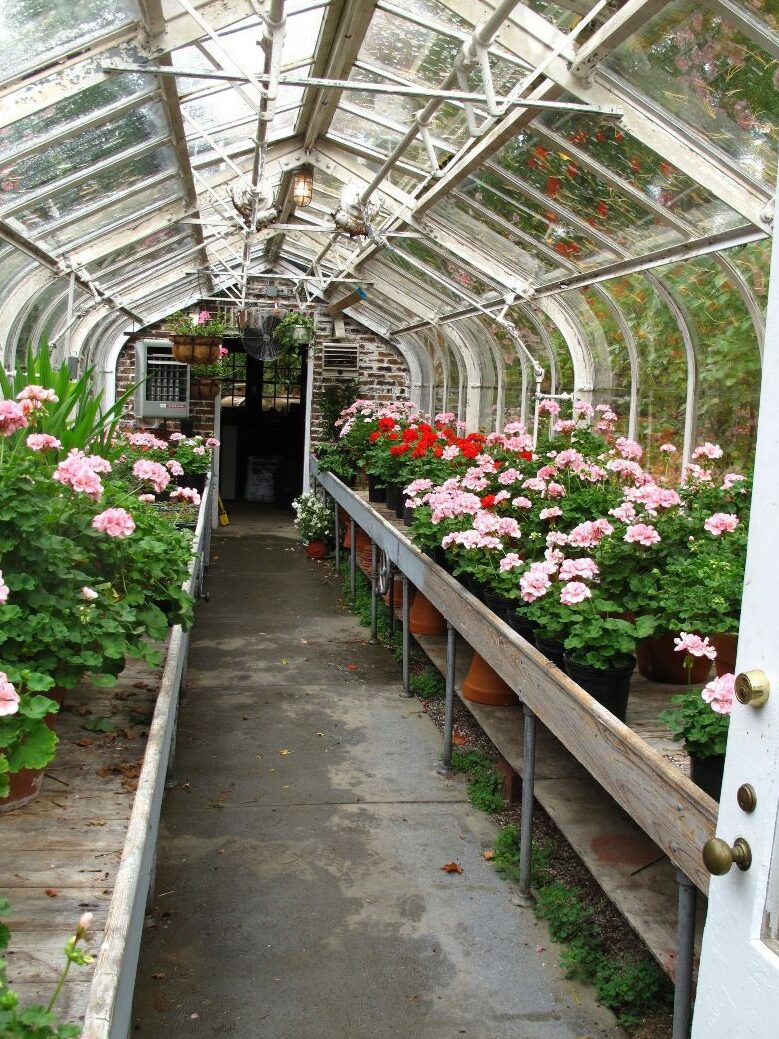This is indeed an exciting time of the year! For many of us, winter’s wrath (or at least the worst part of it) is past us, days are longer, birds are singing and the Earth just has a better feel to it. For those of you growing spring crops for fundraisers, depending on your location, baskets should be well on their way with other pots and bedding plants following just a few weeks behind. Below are just a few things to keep an eye on as we cruise into warmer weather and our crops continue to grow and mature.
Keep an eye on your fertilizer regimen. It is best, if possible, to fertilize with each irrigation rather than a bolus feeding every week or so. This helps in promoting uniform growth, while at the same time, curbing pH drift that can happen quickly when using treated, high pH, municipal waters.

Keep an eye out NOW for pests. Watch the “beacon” plants in the greenhouse especially those which most insects seem to prefer. These would include ipomoea, calibrachoa, tomatoes, gerbera daisies and others that just seem to be irresistible to most insect pests. If you had problems last year with a particular plant be sure to watch that crop as well. Yellow sticky cards can give you an advantage here by detecting and catching thrips, aphids, white-fly and fungus gnats. If monitored in a calculated and deliberate way, you can track growing populations as days become warmer and longer. This is when the life cycle of these pesky rascals really begins to ramp up. You can now spot treat with neem oil, soaps, and other relatively safe insecticides. Marathon and Safari are both systemic and effective on greenhouse ornamentals. They both have a residual effect, keeping plants clean well into spring. The biggest thing to remember with plant pests is to detect and treat early. Just like with pulling weeds, the best time to treat is when the population is minimal and plants are relatively small. Watch the newest growth on your plants as this is preferred by both the feeding larvae and adults. Thrips can be sneaky and often don’t show until their damage is done. They tend to target flowers and they can easily be detected by exhaling into the flower. The CO2 from your breath will stir them up and they’ll come crawling out to where they are then easy to detect.
It is also very important to watch plants that are spaced close together. Once they begin to grow into each other, they’ll start to compete for space and then stretch up towards the sun. They also have the bad habit of intertwining with their neighbors. They’ll often look good on the bench until you go to pull one out and then everything flops and tears in the process. Space your plants as much as you can for a better crop. Good light, crop scheduling and space are the best growth regulators.
MUMS?

Many of you grow mums over the summer months. I know that many of you can’t as it is always better to grow these outdoors with some kind of automatic irrigation system for the best results. They also need monitoring over the summer months which may or may not work for you. If you’re planning to grow mums and have not yet ordered your plants please do immediately to make sure you get your favorite varieties. Most of the mums now offered don’t need pinching. They’re bred for stronger growth and self-branching/rounded shapes. They’re really an easy crop to grow if you can conform to the few mandates above. If you’ve entertained such a project, have had problems with past crops, or difficulty in finding plants, please let me know. I’d be glad to offer advice and will do my best to make your next crop more successful than your last.
Greenhouse Checklist:
Your greenhouse is a complex entity that has many moving parts. It needs constant TLC and maintenance to keep it working properly, while making sure it lasts for many years.
Once your spring plant sale is over, please take time to take a walk and inspect everything in your greenhouse to make sure it is working properly and shows no sign of decline. Perhaps you made notes during the year of things to do regarding irrigation systems, lighting, roof panels flapping in the wind, etc. Now is the time to review these notes and inspect. Most maintenance issues center around the following:
- Cooling Systems – Here is where you have more moving parts than anywhere else in the greenhouse. Make notes of leaks from the top and bottom of the system. Cooling pads need to be cleaned each year to prevent algae & sludge build-up. These pads do have a shelf life and need to be replaced occasionally. This life expectancy is directly related to routine maintenance. The filter needs routine cleaning as well as the sump. Both of these efforts in keeping your water clean will help keep your pump running longer and more efficiently. These cooling systems are made with easy maintenance in mind but, unfortunately, are often overlooked until the system stops working correctly.
- Benches – Sagging? Rusting? Uneven? Sharp, jagged corners? Make notes to level, clean, improve or even replace.
- Irrigation system – Monitor for clogged emitters/nozzles as well as dry spots on the benches. Do you need a better way of distributing water? Perhaps you don’t yet have an automatic system? If you need help with one for your greenhouse, I’d be glad to help. It’s amazing what a bit of automation will do to ease the workload and minimize weekend hours that are so often necessary towards the end of a spring crop.
- Weeds? They love everything you’ve been throwing on the flowers, especially if you have gravel floors. After the spring plants are gone is the time to make sure all weeds are picked clean and that none remain to go to seed. Weeds are a safe haven for insect pests. By keeping your greenhouse weed-free you can go far in preventing problems with pests on your spring flowers. There is also now a new, very effective herbicide on the market that is labeled for and safe in greenhouses. It is inexpensive and can go far in ridding your greenhouse and areas around it free of weeds.

- Roof/glazing? Is your poly torn or tattered? What about the Lexan? Over time it degrades to where yellowing and cracking can occur. With polycarbonate glazing’s such as Lexan, this happens slowly over ten to fifteen years so it can be difficult to detect from day to day. Plants can and will perceive the lack of light from old Lexan long before we can. Give your greenhouse glazing a look and see if any of the above might be a concern.
- Rusted columns – These happen where your greenhouse meets ground. It’s especially noticeable along the cooling system end where constant moisture is present. General contractors can help position new columns to keep your wall from eventually collapsing. If your greenhouse was professionally installed and maintained this should not be a real concern. But that cooling system really needs to be watched. Remember, rust never sleeps.
- Heaters – Have you noticed one working and one not? This is fine in March but not in the winter months. Of course you’ll check this again in the fall but now is a good time to make sure they enter their summer rest in good shape.
- Environmental Control systems. If yours is not working correctly or as you’d like, there is an 800 number on most control systems for just such issues. Manufacturers keep technical staff available to help customers keep their systems running as needed and to troubleshoot. Try to have your owner’s manual as well as the serial number of your unit before you call. Also be sure to have a pen in hand and be near the control panel when making the call. If prepared with the above, often a single phone-call will suffice.
Regarding the above checklist, some of you may be blessed with a maintenance crew that can handle routine repairs but I also know that many of you are not. Try to address all concerns earlier rather than later as a simple fix is much better than a major repair.
In the end, regardless of whether your concerns are simple or more complex, immediately after the spring rush is the time to address them. The greenhouse is then almost empty and these maintenance projects can be completed over the summer and early fall, long before the new school year and cold weather is an issue.
I’d be glad to help in any way I can if you have concerns with any part of your greenhouse. Just send me a description of your situation and some pictures if at all possible. Some issues are easily addressed and others require a bit more thought and planning. Remember that your climate control and glazing are the most important as you strive to emulate the perfect growing environment for your plants. Most schools have a budget for maintenance so you may as well take advantage of it in a proactive way before issues progress and more extreme, expensive maintenance efforts are necessary.
Hope you all have a great spring! Please let me know if I can be of assistance.
Disclaimer!
If you’re doing something different in your greenhouse than is shared above and all is going well, please don’t change. Perhaps modify, experiment and consider but be cautious before changing a good thing. Successful growing is the result of many, many variables. Some we have control over and some we don’t. The above is only meant as a guide or checklist prior to the upcoming growing season.
Questions/Concerns?
If you need help or elaboration on any of the above topics, please feel free to contact us. If you need a source for or advice on annuals, perennials, pH or EC meters, soil or anything else, I can help you with that as well.
Happy Growing!

Mike Hellmann
Plants and Cuttings Manager

One Response